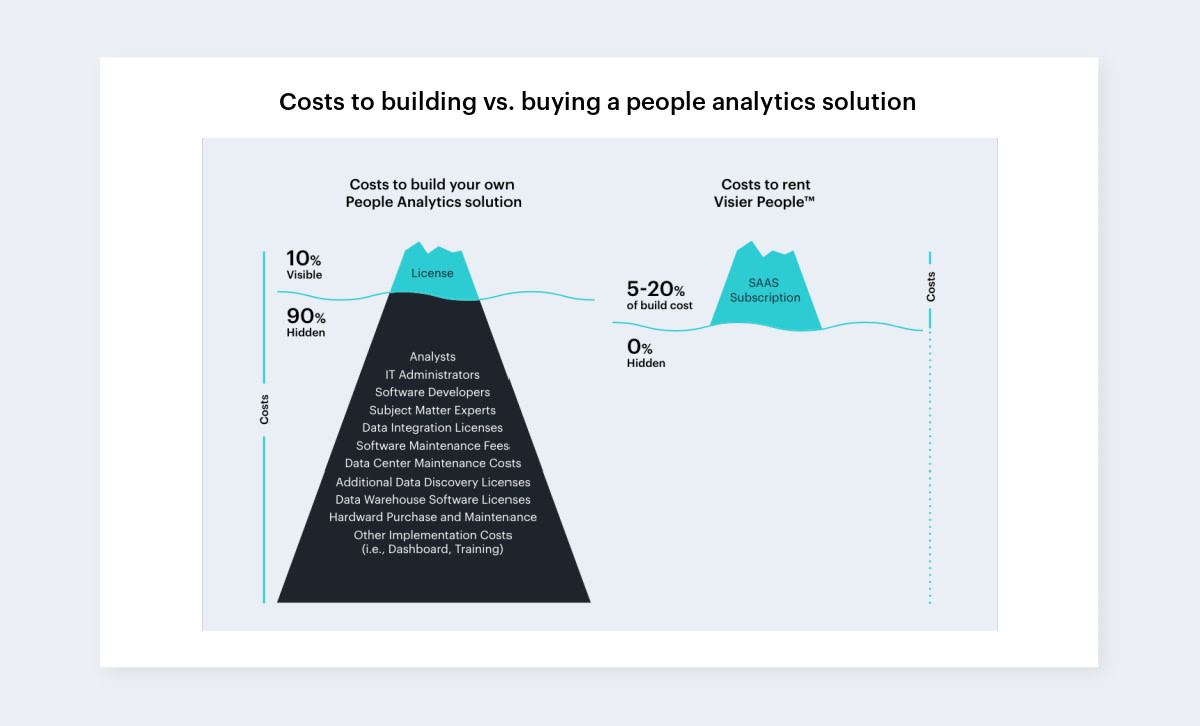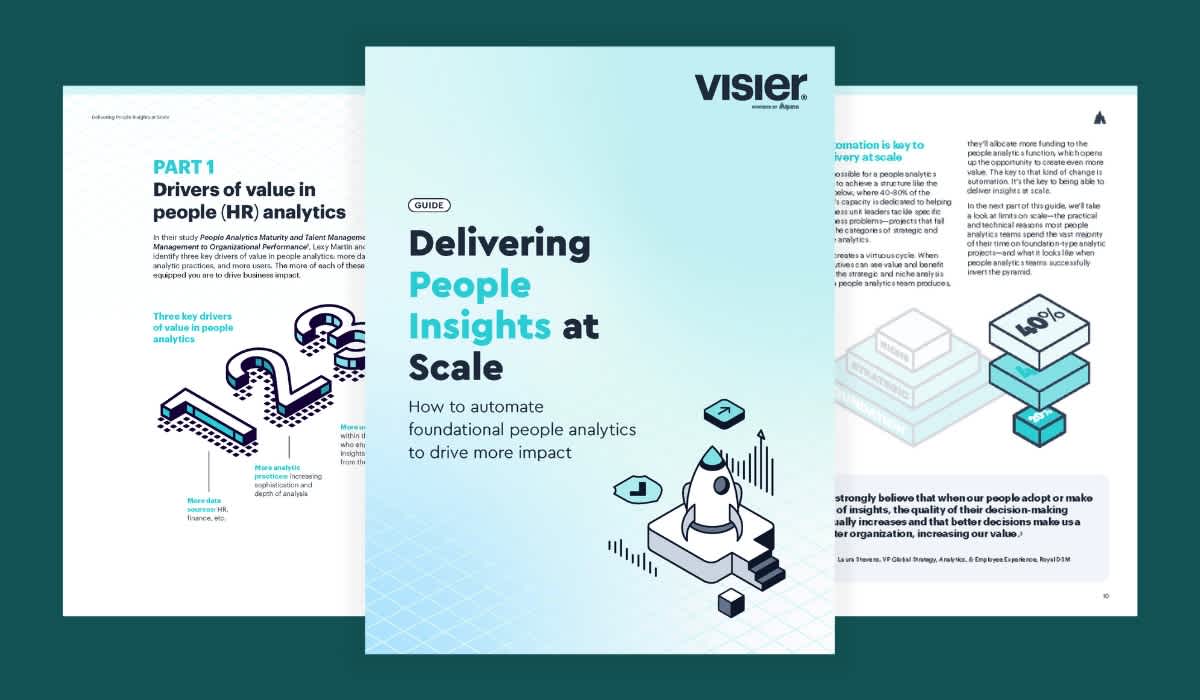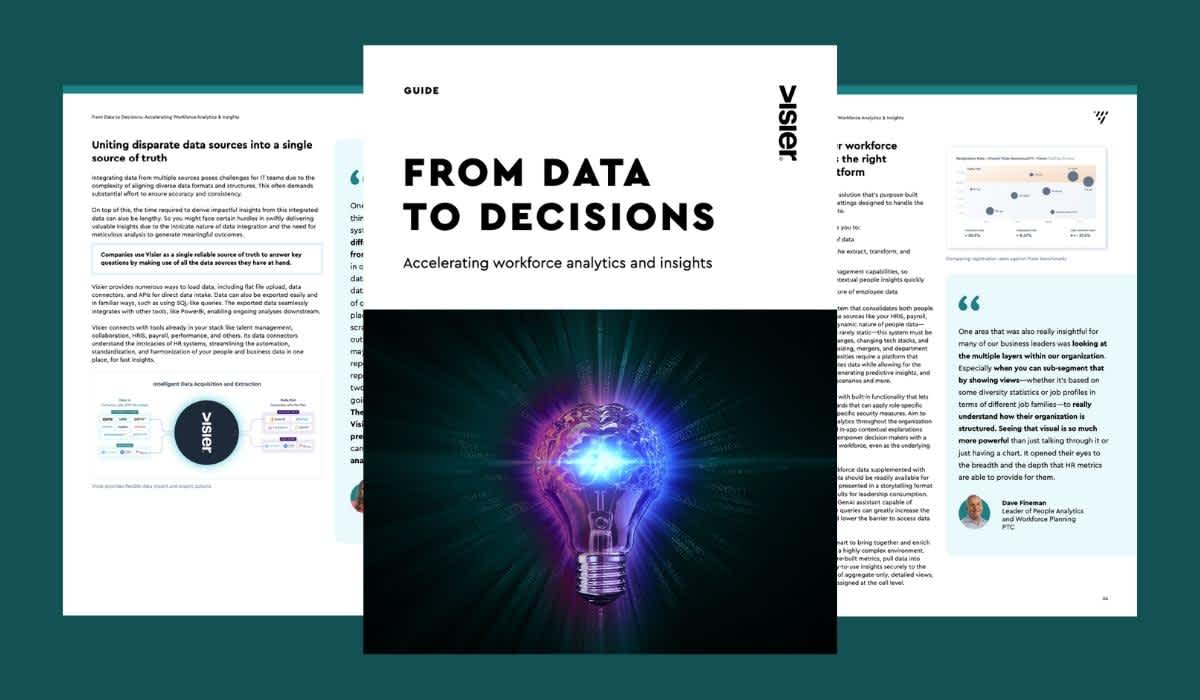Scaling People Analytics: Which HR Technology Approach is Best?
Deciding how to implement your HR technology stack can be tricky. We breakdown the approaches available when scaling your people analytics.

Accelerating people analytics has cemented itself as a major strategic priority for astute business leaders who recognize that employees are today’s most important stakeholders.
Echoing the explosion of customer data capability twenty years ago, organizations today are racing to harness the power of their employee data. HR and business leaders are increasingly asking for actionable people insights to increase workforce visibility and steer high-stakes decisions.

And little wonder, given mature people analytics organizations outperform peers’ revenue by 19% and achieve a 73% higher profit margin and 137% higher return on assets. The People Intelligence Alliance sizes the opportunity cost of the people impact gap at $1.8 trillion.
Visionary technology leaders support and steer this mandate: To guide the business towards a new modus operandi where every decision-maker is empowered to make evidence-based people decisions that better serve the organization’s goals.
But that leaves a major question: how?
For most organizations, the digital transformation mandate is well underway. On the surface, it seems logical to leverage your existing data analytics infrastructure to build people analytics maturity.
But this approach comes with hidden costs. In practice, most organizations will be far better served by investing in a best-in-class people analytics solution and seamlessly integrating it into their existing infrastructure and strategy.
Building people analytics technology internally is often counterintuitive—here’s why.
Four costs of building people analytics technology internally
1. Building capability is too slow
As demand grows for actionable people insights, IT leaders often attempt to leverage the existing data analytics infrastructure to deliver people analytics. The problem is this approach is far too slow to deliver the quality and quantity of insights required.
Take a question that’s front-of-mind for many organizations right now: How would changing the remote work policy impact attrition?
Effective people analytics provide a sophisticated, nuanced answer to questions like this, arming leaders to make sounder strategic decisions. But such insights are time-sensitive: Decision-makers can’t wait weeks and months for an answer.
The power of people analytics is providing answers fast to drive agile action. But trying to derive these insights from your existing tech stack demands herculean internal resources.
For every question, analysts need to define the required metrics; collect, load, and clean the right data from multiple systems; crunch the numbers; and output insights in engaging, visual dashboards.
This approach might just about manage for a few ad-hoc questions, but as demand for people insights flourishes across the business—as it will, because the ability to get fast evidence-based answers to urgent questions is enormously valuable—the ecosystem can’t keep pace.
Building people analytics capability in-house is certainly achievable with time. But already today, mature people analytics organizations are asking questions and modelling scenarios constantly across the whole business to feed continuously better decision-making.
Taking several years to catch up puts you at a major competitive disadvantage. Buying best-in-class plug-and-play people analytics gives you instant maturity—maturity you might take many years to reach, if ever.
2. It’s more expensive
Building a solution often looks like the lowest-cost, quickest option to scale—but the reality is just the opposite. Besides the missed opportunity cost, building people analytics capability internally is also tangibly more expensive than buying a best-in-class application.
What seems like a straightforward BI license purchase turns into a much larger, costlier project when you consider underlying costs like hardware, software, cloud storage, development, IT admins, continual maintenance, R&D, and so on.
Our research puts the typical total cost of homegrown people analytics at $3.5M+—versus a transparent SaaS cost that typically amounts to 5-20% of your total build cost.

In some instances, building people analytics can make more sense for an organization than buying. But, if you’re making that decision on the basis of cost, the logic is probably flawed.
3. It increases your tech talent dependency
Building people analytics in-house creates a huge dependency on technical talent to develop and maintain it. That’s a problem from two angles.
First, hiring technical talent is a major challenge. The tech skills shortage is the highest on record, with 67% of tech leaders saying a lack of skilled staff is slowing digital transformation ambition.
Developing competitive people analytics capability demands a broad range of hard-to-hire (and expensive) skills, like machine learning, data science, data engineering, and data storytelling.
And once you’ve built those skills, you then have an increased risk of lost intellectual capital if (when) your critical talent leaves. Technical talent already has a high attrition rate. Recent research shows that 46% of young UK workers in tech roles plan to leave their job within the next year, and today’s talent market is uniquely buoyant: This is a big risk.
Buying best-in-class people analytics software protects against this risk by reducing dependency on volatile skills, detangling business-critical functions from HR headwinds. A platform like Visier has many years of the best intellectual capital baked into the product. It’s like scooping all the best technical talent off the market and retaining them indefinitely.
4. It’s not scalable
The need for people analytics scalability is the major trend we’re seeing among Fortune 2000 companies—but building capability internally is at odds with this vision.
Traditional BI and enterprise data tools are typically complex, hard to use, and inaccessible without data science expertise. Even when you turn them towards people analytics, they’re orientated toward data expert users.
In consequence, your data team becomes gatekeepers and bottlenecks over the analytics process. That not only reroutes your team’s bandwidth away from other important analytics capabilities: But it’s also fundamentally contrary to the value proposition of people analytics.
A mature people analytics function pushes a continuous stream of insights into the hands of daily decision-makers, creating an army of “analysts”. It isn’t a manual process of pulling insights on request: Treating people analytics like this limits impact dramatically.
The right people analytics platform democratizes data, empowering broad participation and elevating everyday decision-making across the business. That’s when people analytics becomes transformative. It’s not a new piece of tech; it’s a new way of finding insights and making data-driven decisions.
Is your current HR technology keeping your finger on the pulse?
When you’re already investing significant time and resources into digital transformation, building people analytics capability within your existing data infrastructure seems logical.
But the truth is, buying best-in-class people analytics off the shelf usually offers a far better time-to-value, is much more cost-efficient, and gives you radically better scalability.
And this approach perfectly complements existing build capability, freeing your team’s time to continue adding mature value rather than sending them back down the mountain to build from scratch. It needn’t be ‘buy versus build’ but ‘buy and build’.
A good pre-built open analytics platform will seamlessly integrate into your other systems and current data lakes, giving you connectivity as good as if you’d built it yourself. All while putting the tech straight into the hands of your users, who’ll benefit from mature insights immediately.
And benefit they will. Visier customers typically increase revenue-per-employee by $124K—and deliver this value twice as efficiently—with approximately half the team size of organizations that use other people analytics solutions.
In this era of the employee, people data is one of your biggest strategic assets: There’s an explosive opportunity here for organizations that harness people data and analytics to identify actionable insights.



